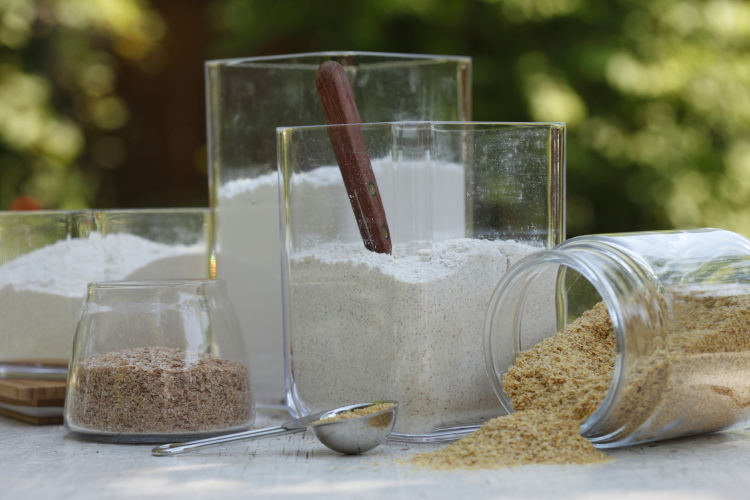Include more whole-grains
You might have noticed that we’ve started including wheat germ in our recipes that use whole-wheat flour. We’ve done this to make these recipes whole-grain.
We know that many studies have suggested we include whole-grains in our diets. These studies suggest that whole-grains may decrease the risk of cancer, cardiovascular disease, diabetes, obesity as well as all-cause mortality.
That’s good enough reason for me to make sure I’m consuming whole-grains every day!
The most widely used flour in homes today is wheat flour. Did you know that, in Canada, when you buy whole-wheat flour or products made with whole-wheat flour you are not necessarily getting a whole-grain product? Yes, it’s true, whole-wheat does not equal whole-grain but it’s an easy fix.
Wheat flour basics
First let’s start with the basics. Wheat flour comes from ground wheat kernels. A wheat kernel has three main parts; the bran (or outer layer), the endosperm (the inner part of the grain) and the germ (the plant embryo).
In Canada, when wheat is processed into flour, the three parts are separated. These three parts are either blended to make specific products or sold on their own. The whole-wheat flour we purchase in Canada is a mixture of the endosperm and the bran but does not contain the germ. This means that it is not whole-grain.
To make your whole-wheat flour a whole-grain at home you need to add back in the wheat germ (see using wheat germ below on how to do this). When you are purchasing prepared food products look for ones that list “whole-grain whole-wheat flour” in the ingredient list or have wheat germ listed separately as an ingredient.

Wheat germ nutrition
The germ is physically a small part of the wheat kernel. However, this small part is a highly concentrated source of nutrients, including; niacin, thiamin, riboflavin, vitamin E, folate, magnesium, phosphorus, potassium, iron and zinc. The germ also contains protein, fibre and some fat.
Using wheat germ
To lengthen its shelf life, store wheat germ in the refrigerator or freezer in a tightly sealed container. Like whole-wheat flour it will go rancid and have an off flavour or odour when it spoils.
5 ways to add wheat germ into your diet
-Add 1 Tbsp wheat germ for every 1 cup of whole-wheat flour in your baking recipes (cookies, breads, pancakes, pizza dough, etc.).
-Sprinkle wheat germ on top of yogurt and ice cream or add it to your smoothies.
-Top cold cereals and hot cereals like oatmeal with wheat germ.
-Add wheat germ to meat or bean loafs as, burgers and when cooking ground meats.
-Mix it into crumbles that top fruit or add it to your favourite granola recipe.
We’ve created the Brownie Bite recipe below that includes a mixture of all-purpose flour, whole-wheat flour and wheat germ to get you on your way. I hope you enjoy this whole-grain chocolaty treat!
Be Well…Jenn


Comments are closed.